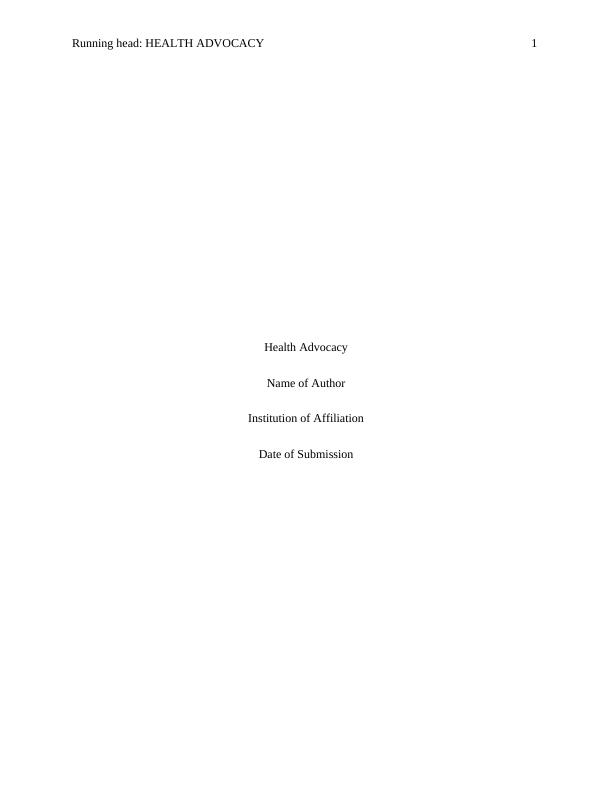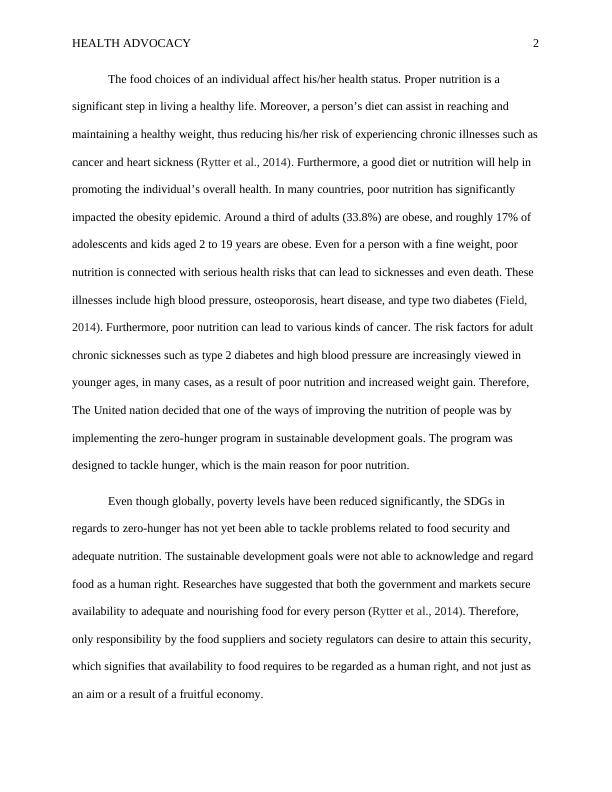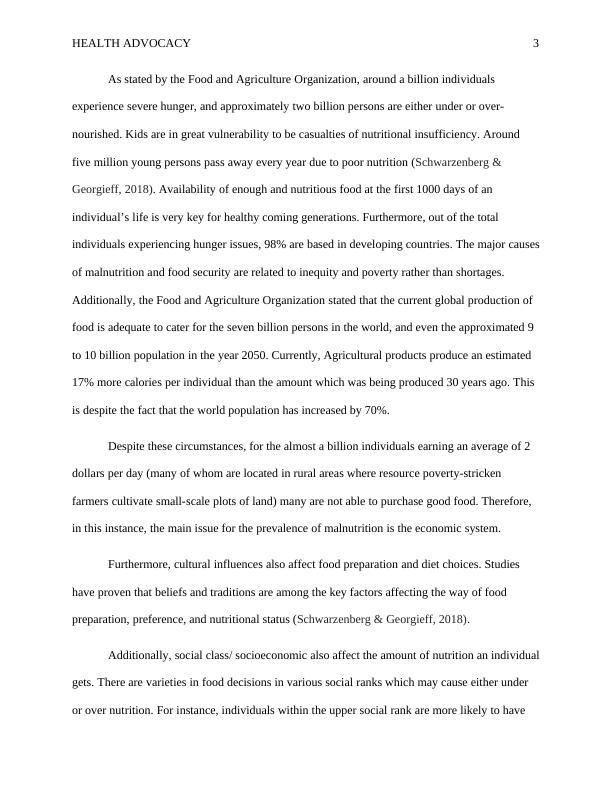Health Advocacy Assignment 2022
Critically appraise a health issue related to one of the UN’s sustainable development goals and discuss the application of a theory of change for effective health advocacy.
10 Pages2764 Words22 Views
Added on 2022-10-11
Health Advocacy Assignment 2022
Critically appraise a health issue related to one of the UN’s sustainable development goals and discuss the application of a theory of change for effective health advocacy.
Added on 2022-10-11
ShareRelated Documents
End of preview
Want to access all the pages? Upload your documents or become a member.
Study on Ensuring Food Security
|14
|3773
|45
Community Development on Malnutrition in Africa
|33
|6995
|284
Improving Nutrition
|10
|2038
|31
Food Poverty: Analysis, Statistics, and Policies
|12
|654
|405
Obesity: A Global Public Health Issue
|11
|807
|153
The Role of Nurses in Health Promotion and Nutrition
|7
|1738
|409



